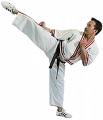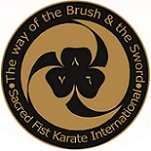|
Baras Rizal agrarians who
gathered during the festival after a good harvest season. Constant practice
lead to the development skills that would eventually be marked by notable
effectiveness; of the practitioners, some went on to discover certain skills
in combat that made them deserve the honor of being called "Hari"(king). The
original practitioners have long passed, taking the secrets of their art
with them.The art dates back to the early 1500s before the Spaniards came.
It is the art of foot-fighting where the farmers use their legs to drive the
partners outside the designated line (pitak) which was drawn in rice fields
about 25 square feet (2.3 m2) |
 |
|
Sikaran have its own share of
kicking styles. The "Biakid" the classic kick is executed by pivoting to the
back in a full or complete turn about manner. The degree of effectiveness
subscribes to two classifications: "panghilo" (paralyzing blow) and
"pamatay" or lethal kick. Obviously the first aimed at less vital parts of
the physique, while the target of the second includes the heart, neck, head,
groin, and spine, all highly vulnerable parts.
Weapons of Sikaran include the balisong, kris, sticks among others.
Sikaran utilizes only the feet as a rule for sport and for combat,
self-defense and this is what makes it distinct, the hands are never availed
of in the sikaran. If they utilized at all, it's only for defense, the
player uses his legs 90% of the time and his hands 10% only for blocking or
parrying blows. Violation of this injunction, especially in tournaments, is
ground for disqualification.
The entry of Sikaran in tournaments, particularly those of international
caliber, presaged certain modifications, if innovations, of its original
rules. Like the setting of a time limit, widening of the fighting area into
twice the size required of the original arena. |













